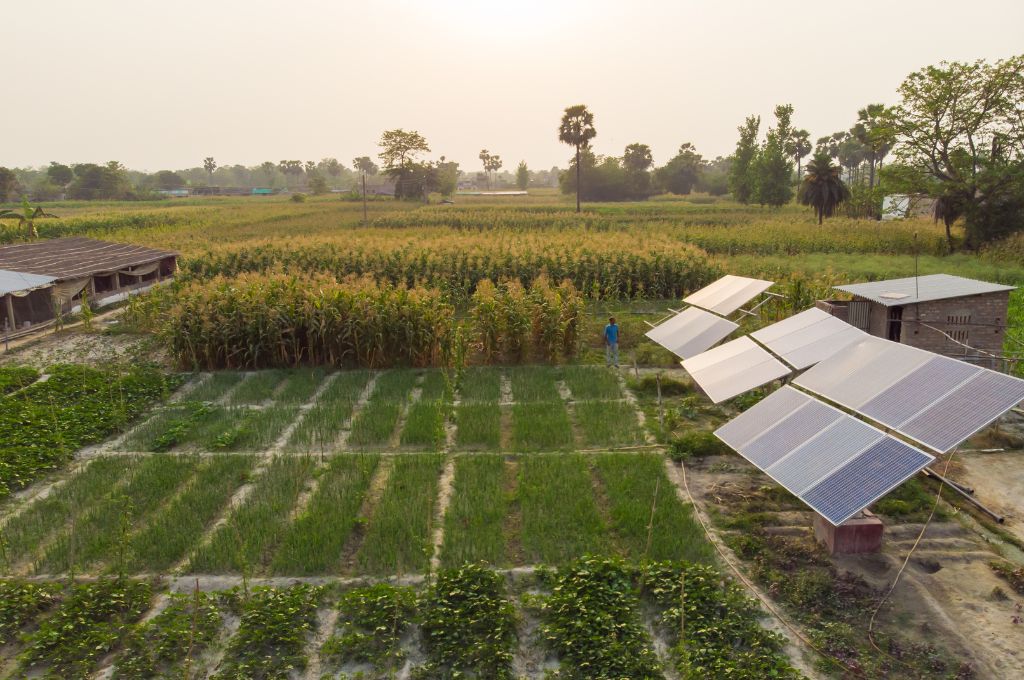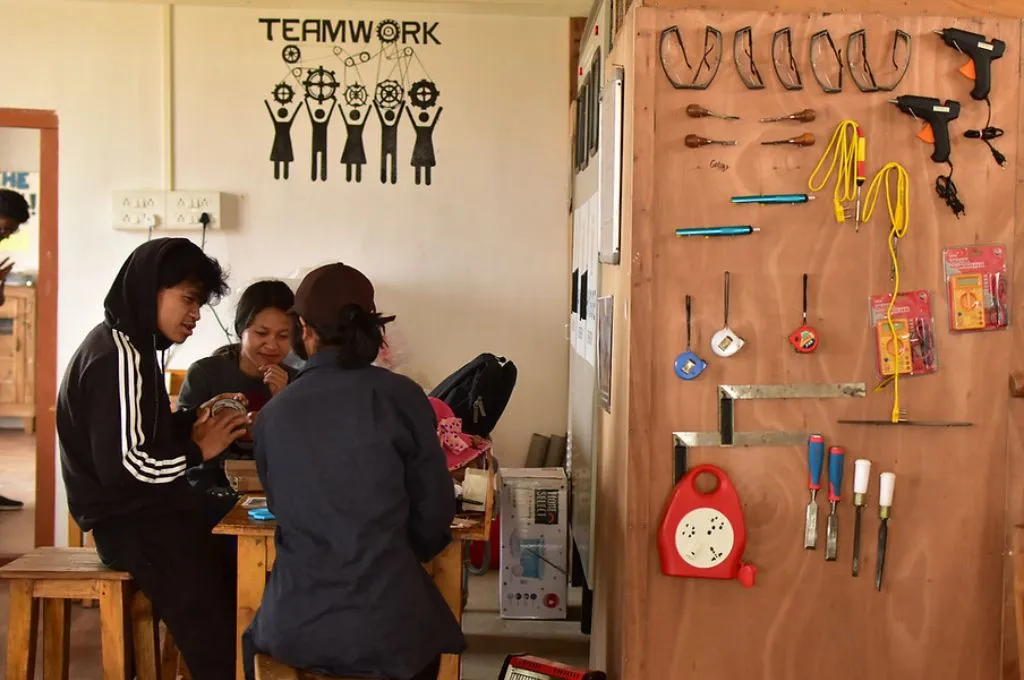Large-scale government programmes often start as pilots. A pilot is a small-scale experiment to assess the feasibility of the implementation process. Typically, for government schemes, pilots are carried out in a small location, a few villages, or gram panchayats in a district to understand what’s working and what’s not, and what needs to be tweaked before scaling up.
This is the norm for programmes launched by the government. Let’s consider Pradhan Mantri Kisan Urja Suraksha Evam Utthan Mahabhiyan (PM KUSUM), a scheme introduced in 2019 to increase farmer incomes as well as decarbonise the agricultural sector through solar irrigation. The first phase of PM KUSUM, between July and December 2019, was marked by pilots to test how its different components—such as subsidy rates and feed-in tariffs (FiTs), that is, the price at which electricity distribution companies buy back renewable energy from the farmer—would work on the ground.
The scheme has since gathered momentum. As of June 2023, a total of 113.08 MW capacity of small solar power plants—each of up to 2 MW capacity—and 2.45 lakh pumps have been reported installed or solarised to date. At COP 26, the Government of India set an ambitious goal to achieve net-zero emissions by 2070. India has also committed to achieving 50 percent of its cumulative electric power installed from non-fossil fuel sources, which includes solar. While agriculture comes second in total emissions, there is scope to do this without placing the burden on farmers. PM KUSUM is a step in this direction.
With its trajectory of pilot to scale, it can be assumed that any glitches with this scheme would have been sorted out during the pilot phase, before it was promoted on a nationwide scale. But it was not so straightforward.
Pilots are not always sufficient
While pilots are useful, they run a risk—when the success of isolated cases is extrapolated on a larger scale, they can sometimes have unintended consequences. This is especially true of interventions in the agriculture and water sector. For instance, farm ponds gained popularity a few years ago. These were small farm-scale interventions that were set up to provide farmers in arid areas access to water during the rabi (winter) and kharif (summer) seasons so that they could grow a second and third crop. At a small scale, ponds built on a few farms are usually effective and rarely have any adverse impact. However, farm ponds built across larger land areas or in greater number can lead to unexpected issues such as water inequity and privatisation of water.
In the case of PM KUSUM, here are three problems that the pilots presented:
- Schemes like PM KUSUM are ‘gold-plated’, which means that they are offered at highly lucrative terms. For instance, the subsidies provided to farmers by the state and the centre cover 70 percent of the cost of the programme. However, these subsidies are only part of the pilot programme, not the scheme itself. The problem with gold-plating schemes and making them cover such a large part of the cost is that while there may be immediate buy-in from the farmers, there is no real change in long-term behaviour, for without the subsidies the farmers may not opt for the scheme. In addition, subsidies are a huge burden on the government exchequer and are therefore not sustainable in the long run.
- Biophysical (rainfall, soil conditions, aquifers) and socio-economic (landholding size, religion/caste, household income) conditions vary in a diverse landscape like India, so the external validity of the results of these pilots is questionable. There may be contingencies that are difficult to anticipate in the planning stage of a project.
- Insights from most pilots suggest that farmers take months, if not years, to understand how schemes work and to trust the payment process associated with them. When we asked farmers in Tamil Nadu’s Coimbatore district about government schemes, their knowledge was limited on several fronts. Some weren’t aware of the schemes, and while others were aware, they didn’t know how to apply for them. This indicates that pilots often work with a small group of possibly ‘progressive or early adopted farmers’. And even for this group, the shift from knowledge to practice in any sort of tangible way often occurs at a longer time scale of five to seven years. This is far more than the average programme evaluation scale of just a few months.
Hence, empirical data from these early pilots are insufficient to scale large projects in a country with contexts as varied as India. Our research found that modelling exercises can anticipate impact more comprehensively instead.

What is agent-based modelling?
Modelling, in the form of simulations, can provide a preview of potential outcomes. A model is a simplified representation of reality, often designed to help explain, understand, or predict certain aspects of that reality. The effectiveness of a model usually depends on how well it approximates the real-world system or scenario it is meant to represent.
While pilots are actual physical interventions and require time and high investment in resources for implementation, models are often a quicker and less expensive way of understanding the potential impacts of interventions. They can be simply created on a computer using tools that require expertise, but not as much investment as the pilots themselves.
With respect to solar irrigation, agent-based modelling (ABM) can help us understand the choices farmers are likely to make when presented with the income-enhancing options that solar pumps offer. ABM is used to simulate the actions and interactions of autonomous agents (individuals or collective entities such as organisations or groups) in order to assess their effects on the system as a whole.
There are two potential outcomes in such a scenario: (a) Farmers without access to electricity and irrigation can finally pump the water they need to cultivate more, or (b) farmers with access to both electricity and irrigation can sell the excess energy back to the grid through the feed-in tariff. And yet, there is a combination of factors—local biophysical, socio-economic, and sociopolitical—that determine what the farmers would probably do.
We conducted an ABM exercise to ascertain how farmers were likely to respond to the PM KUSUM scheme. Here, the ‘agent’ is the farmer. The modelling framework is based on the premise that individual farmers decide which crops to cultivate, driven by the need to maximise profit and minimise risk. The crops they choose to cultivate depend on:
- Existing policies, such as access to strong procurement systems and a guaranteed minimum support price (MSP).
- The constraints they face around land, water, and electricity.
We chose six case study sites based on farmers’ access to water, land, and electricity. In this article, we discuss our findings from one site.
Case study: Bathinda, Punjab
In Punjab’s Bathinda district, most farmers follow one of three cropping systems: rice–wheat (rice in the kharif season, followed by wheat in the rabi season), cotton–potato, and kinnow (a citrus fruit tree).
Among these groupings, the rice–wheat cropping system requires the most water, followed by cotton–potato, and then kinnow. In this district, availability of land is the major constraint, since approximately 99 percent of cropland is already under irrigation. Most farmers follow irrigation-intensive rice–wheat cropping patterns and can neither bring more land under irrigation nor increase the amount of water they pump.
Farmers in Bathinda do not face an energy limitation as the Punjab government provides free or heavily subsidised electricity to farmers. Their shallow tube wells are powered by grid-connected electricity, and, on average, they receive four to eight hours of electricity every day during the kharif and rabi seasons. This is comparable to the average of four to five hours of electricity that solar panels provide, albeit with a little more certainty in timings.
In terms of water access, groundwater in Punjab is held in massive alluvial aquifers; hence, the pinch of groundwater decline has not yet been felt. Even in low-rainfall years, there is no water scarcity. Studies have shown that the area under rice cultivation is completely unaffected by rainfall variability in Punjab.
Given that irrigation is at maximum capacity, the question now is whether it could decrease enough to make a dent in the current rate of overexploitation. What crop choices are farmers likely to make? How will their profit change? How will the groundwater status change?
The ABM suggests that a ‘sustainable transition’ is theoretically possible
We define a sustainable transition as an event where a farmer reduces water use while increasing income and either reducing or maintaining the same level of risk.
A farmer growing rice–wheat has three options.
- Switch to growing cotton–potato: From an income perspective, this option is profitable and reduces water consumption marginally.
- Switch to growing kinnow: This option reduces water consumption by a large amount but increases income marginally.
- Continue growing rice–wheat: This option keeps income at current levels, which is lower compared to other crop choices, but water consumption remains dangerously high.
It is theoretically possible for a farmer to move from growing rice–wheat or cotton–potato to kinnow. Our calculations suggest that these transitions are both economically viable and less water intensive. Farmers will earn more through the sale of solar energy and crops while significantly cutting down on their water use as kinnow requires lower levels of irrigation compared with rice–wheat and cotton–potato.
However, both rice–wheat and cotton–potato farmers are unlikely to budge from their current cropping patterns at least in the medium term, even if solar irrigation results in a small increase in their earnings.

There are two types of risk that could dissuade farmers from making a sustainable transition:
- Price-related risk, which crops without MSP are prone to since they are subject to market forces. What this means is that there are no guaranteed prices for kinnow or potato. If there is a shortage of these products in the market, farmers might gain from an increase in price; however, if supply is greater than demand, it is likely to result in a price crash, affecting the farmer’s home economics. These price variations are unpredictable and hence carry a huge risk.
- Cultural risks, where farmers are hesitant to move away from growing crops that they are familiar with. Cultivating a new crop requires knowledge and expertise, and access to new input/service providers. Farmers are often path-dependent, which means that the cultivation of a certain crop using certain practices is dominant and self-reinforcing. To move to a new crop would require getting over that cultural barrier, which is challenging.
Hence, the introduction of solar irrigation may not result in sustainable transitions in Bathinda, as the agent/farmer will continue growing rice–wheat. Solar irrigation might only marginally increase profits, given the initial capital cost that the farmer will have to incur for the solar pump. This choice is likely to result in continued over-abstraction of groundwater resources—as the crops stay the same, so does the high irrigation water requirement.
These choices are ‘locked-in’ despite the clear advantages associated with cultivating a different crop. Our sensitivity analysis showed that at low FiTs and low subsidies, it is not profitable for a rice–wheat farmer to continue growing the same with solar irrigation. In other words, the adoption of solar irrigation itself is likely to be low if farmers remain risk-averse. Only when the FiT crosses a threshold of INR 5 per kilowatt-hour and comes with a subsidy of 70 percent will it be profitable for the farmer to grow rice–wheat after switching to solar. However, it is important to note that switching to cotton–potato and kinnow is profitable for the farmer across most FiTs and subsidies. But earlier descriptions of the farmer’s perceptions of price-related and cultural risks show that this is a highly improbable outcome.
Simulations are not always foolproof
It’s important to note that there will be contingencies or scenarios that modelling will fail to predict because human behaviour is not perfectly predictable. Additionally, there may be ‘black swan’ events, which are developments in these ecosystems that could completely change the trajectory, rendering the outcomes we have outlined here void. For instance, a rural entrepreneur could set up a kinnow-based jam factory and there might be a steady demand for kinnow, which derisks farmers from economic shocks and is environmentally more suitable for the Bathinda landscape.
There are other limitations. One is that the study does not take into account how farmers share knowledge among themselves during the implementation of a programme. This peer-to-peer learning is an important factor that affects their behaviour. The study is also constrained by a focus on crop transitions and not irrigation technologies, even though different irrigation technologies will result in different water savings when switching from one crop to another. Additionally, it only considers income from crop cultivation and not off-farm sources such as livestock rearing.
However, modelling work still holds value. Simulations are particularly important before the large-scale rollout of programmes so that we can account for inadvertent consequences during the planning process itself. The nature of federalism in India dictates that the central government design programmes and state governments implement them. However, given how India is geographically, socio-economically, and culturally diverse, there is merit in finding ways to let state governments inform programme design. Simulations like this one can be powerful tools that allow state governments to inform policy design, and subsequently more effective programme implementation.
To ensure the optimal allocation of government funds, it is essential to rely on simulations. These tools enable us to model various scenarios meticulously, providing invaluable insights for making informed decisions about public spending. By employing simulations, we can forecast outcomes more accurately, identify potential pitfalls, and maximise the effectiveness of each rupee spent. This approach is crucial for responsible fiscal management and the achievement of desired policy outcomes.
—






